Your brand is being talked about on YouTube right now—and you probably have no idea what’s being said.
YouTube is the second-largest search engine, where users spend roughly 50 minutes daily (and growing).
It’s also the 2nd most cited source by LLMs, meaning video mentions don’t just reach human audiences—they teach AI how to recommend your brand.
YouTube creators are shaping brand narratives in front of millions of viewers.
Take Canva: it picked up around 460 YouTube mentions this month (according to the YouTube report in Ahrefs Brand Radar).
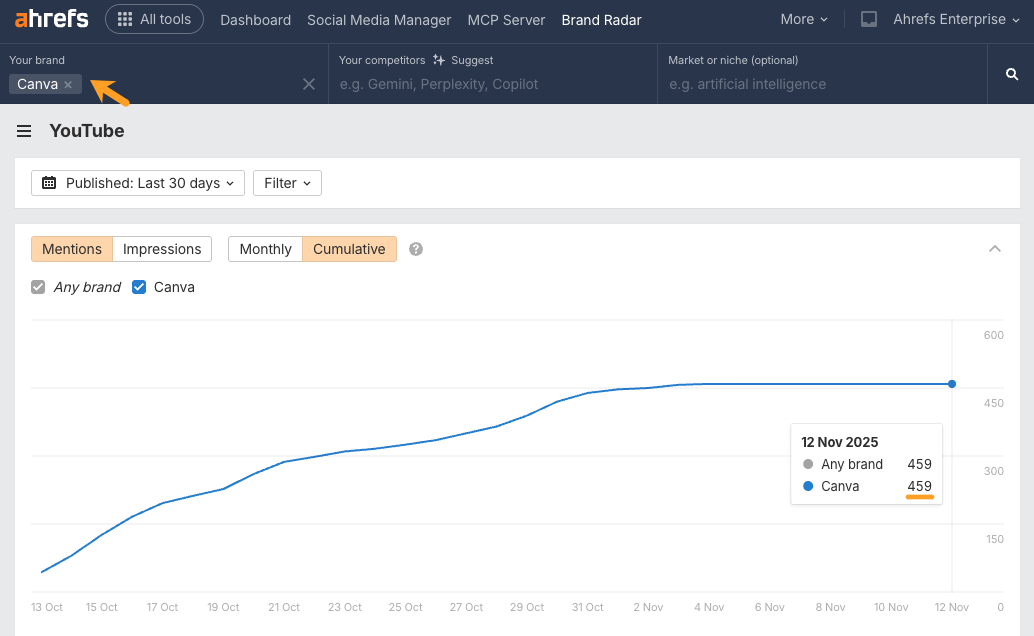
That might not sound like much, until you realize those 460 mentions translate to 3.4 million views.
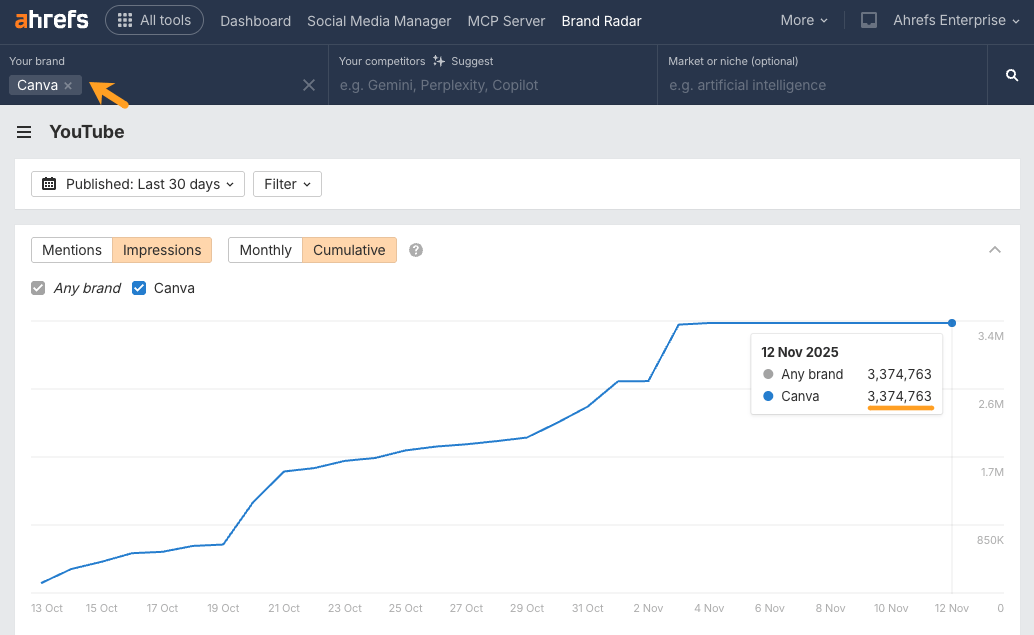
If you’re not monitoring your YouTube mentions, you’re leaving your reputation in someone else’s hands.
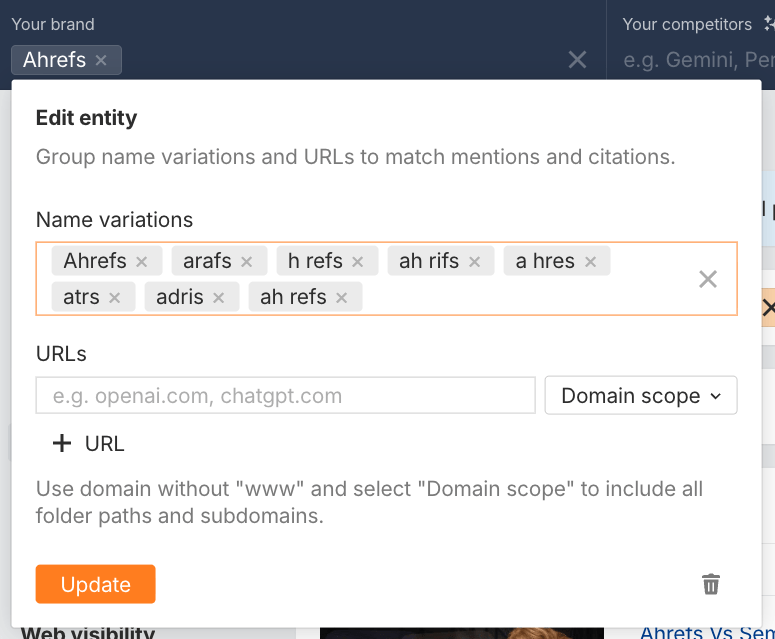
If your brand name is also tricky to pronounce, think about tracking for mentions of your brand’s features, products, or services.
For example, “Keyword difficulty” and “Domain rating” are both uniquely developed Ahrefs scores, so we might want to think about tracking those to get a better sense of where our brand is referenced.
You can save these variations by hitting the “Save report” button on the main Brand Radar dashboard:

In return, you’ll get a monthly view of your YouTube brand mentions, which you can track periodically to assess growth or decline.
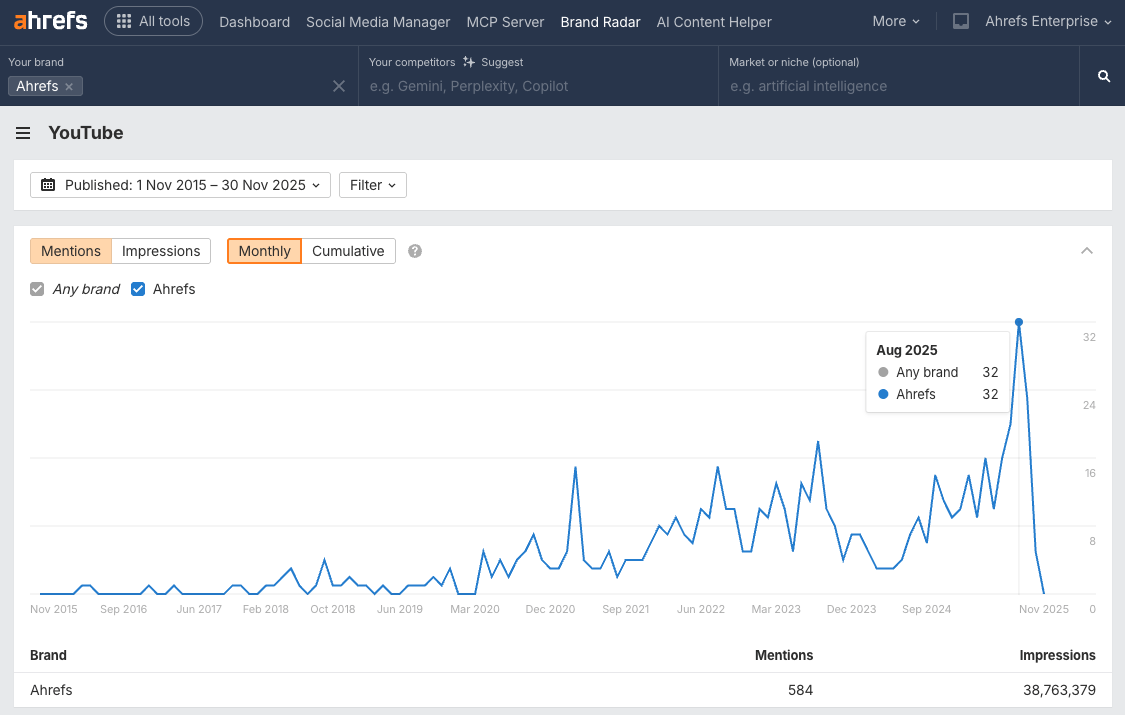
Beneath that, you’ll see a list of videos organically mentioning your brand, ordered by “relevance”.
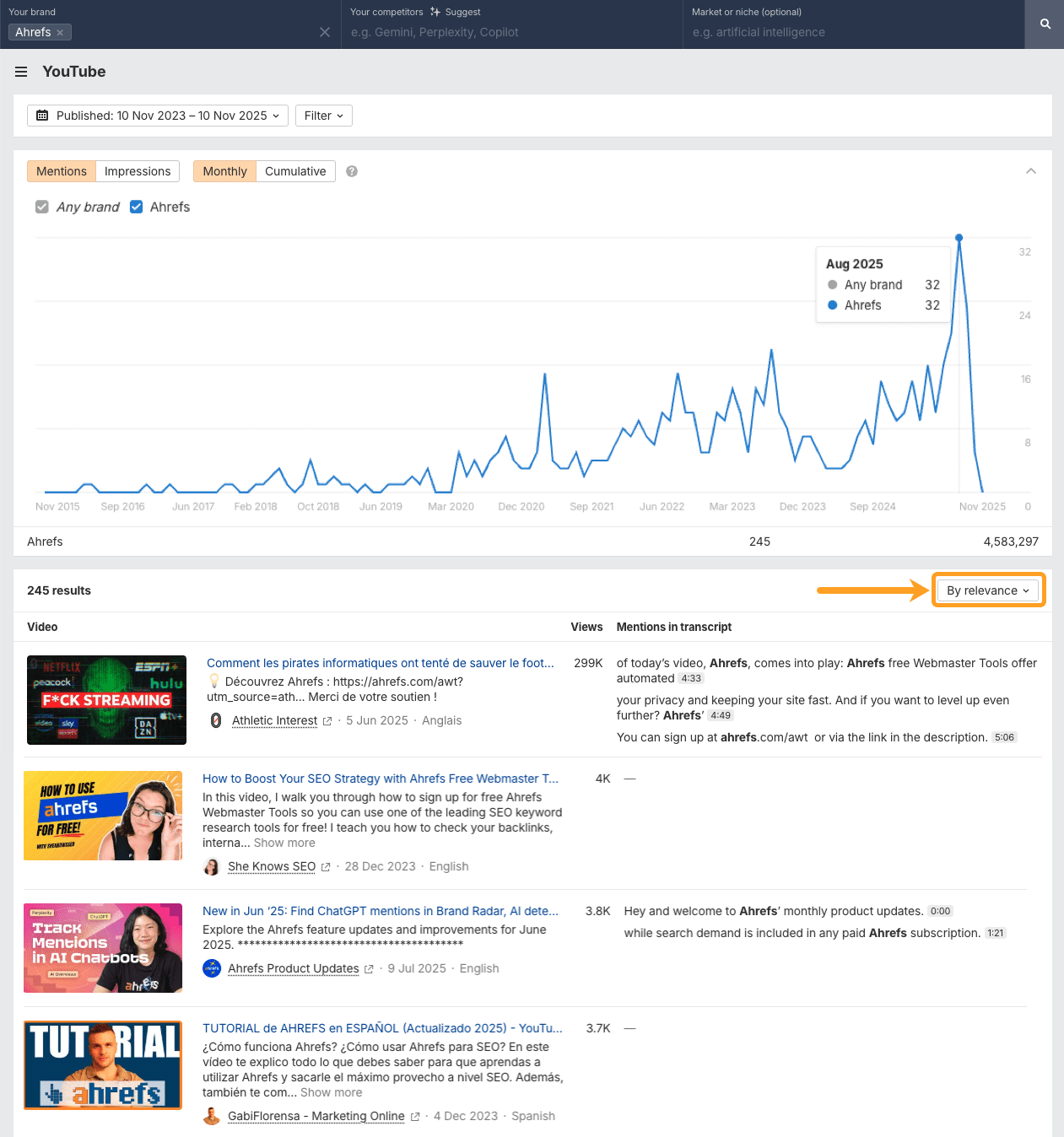
Results that are considered “relevant” are ranked based on a combination of mention frequency and view count.
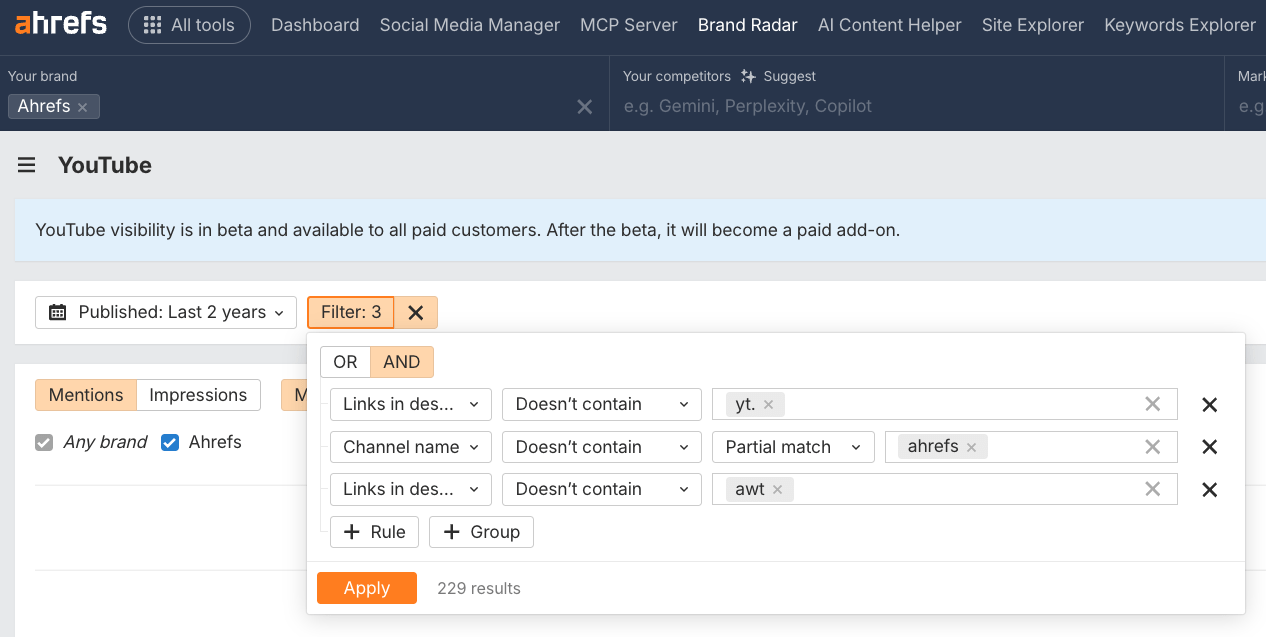
That filter takes us from 1,482 results to 229 word of mouth mentions. But we’re not done yet.
Some of these mentions are showcasing alternatives to Ahrefs, or pitting us against our competitors.
For now, we want to focus on UGC that is centered around our brand—not our competitors.
So, we need to add a Title > doesn’t contain > partial match > [competitor name]. This leaves us with 201 mentions.
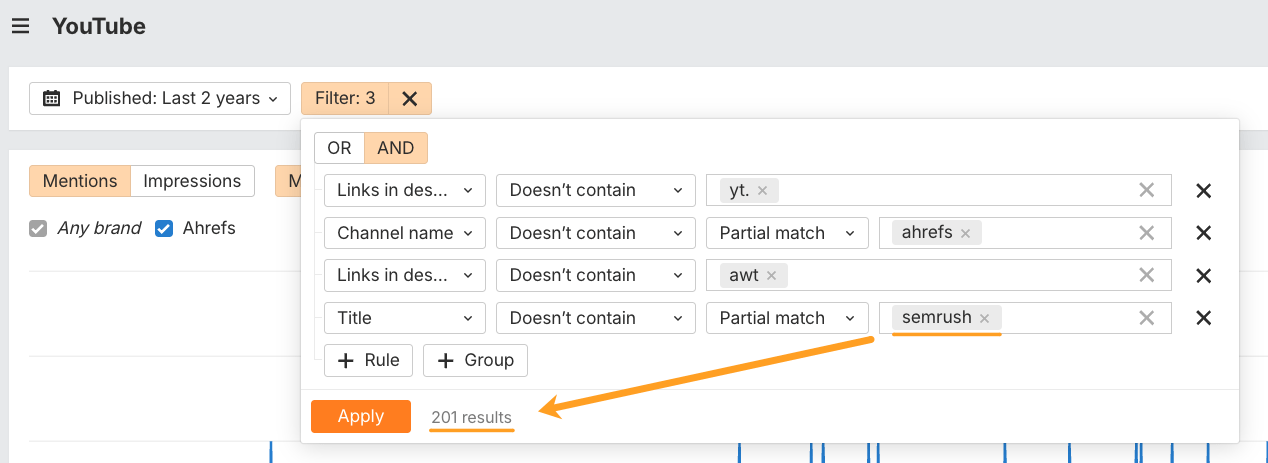
If you’ve followed along so far, you can continue filtering even further to see which videos your brand is the primary focus of (e.g. Title > contains > partial match > [brand name])
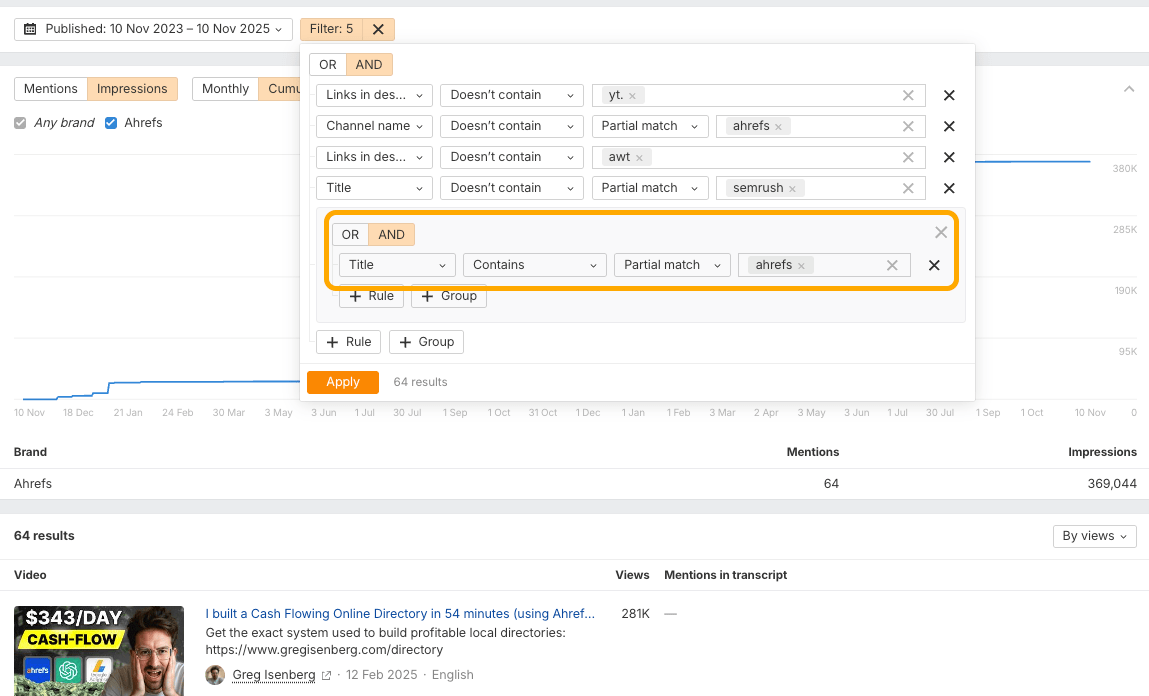
Versus the videos that mention it in passing (e.g. Title > Doesn’t contain > partial match > [brand name])
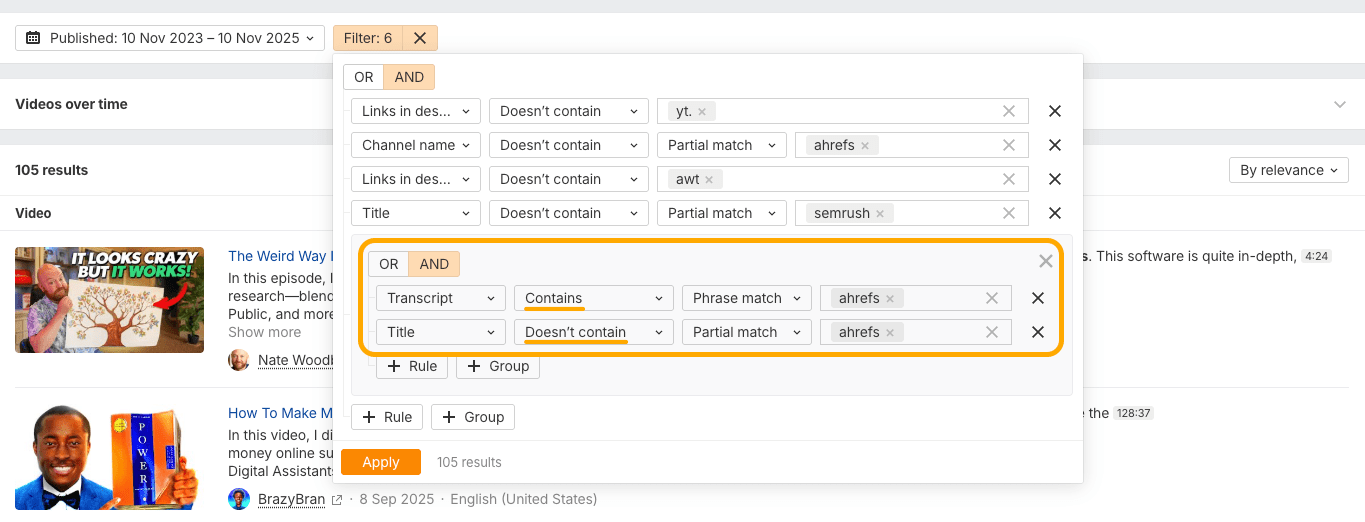
This kind of analysis can show you how customers actually use your products and services.
For example, the video below shows that people particularly use our tool Brand Radar for AI competitor gap analysis…

While the next video shows that some users would like to see more actionable recommendations within the platform…
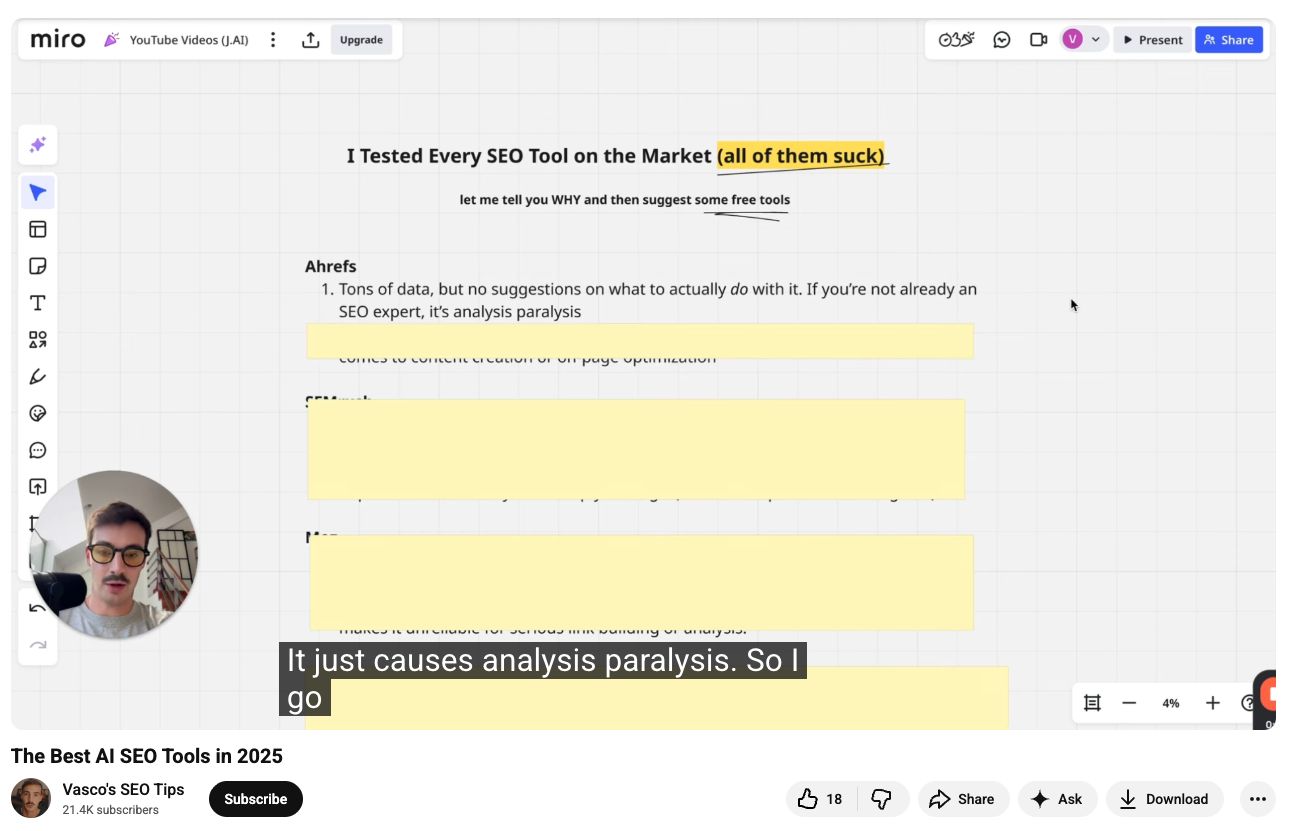
You can use these kinds of insights to shape your content, and pass them over to the product team to inform your roadmap.
- Is this an audience you want to reach?
- Is the recommended product/service valuable to your business?
- Does the channel or video topic align with your marketing goals?
In this example, the audience probably isn’t right for Ahrefs. The video primarily targets beginners who are more likely to be interested in our free keyword tools.
Our priority, on the other hand, is promoting our more advanced tools to mature SEOs and marketers in medium-sized to enterprise businesses.
Which brings me on to the next video…

While it has fewer views, it features Ahrefs in workflows that appeal to our actual target audience: mature marketers in corporate brands.
It also covers a topic that is a big product focus for us right now: AI.
Plus the creator shows off a use case that could be even better handled by our new ChatGPT SEO tool: Ahrefs MCP.
Diving even deeper, I can see the creator has ~98K subscribers, and that her channel aligns with our topic focus: Digital marketing, AI strategy, professional growth, tech & business.
So that’s an:
- Audience match
- Product match
- Marketing/topic match
To me, this looks like a much better partnership opportunity.
If you want to cast an even wider net, you can repeat this whole process, but remove your own brand mentions from the equation, and instead filter by the market/industry you’re aiming to get mentioned in.
For example, here’s a detailed filter I built to find relevant creators in the “AI marketing space”.

Use the filters to sort through your mentions until you find creators worth partnering with.
These mentions reveal what draws buyers to your brand, or sends them to a competitor.
Tracking bottom-of-funnel YouTube mentions helps you:
- Address common objections: Spot recurring concerns in reviews, then publish blog posts, update your FAQ page, or ship product fixes that directly counter them
- Double down on differentiators: When creators say one of your features beats your competitors, spotlight it on your homepage, product pages, paid ads, and sales decks
- Train your sales team: Give sales reps responses to the exact objections, questions, and problems appearing in these videos
- Mine testimonials: Find authentic customer stories in video mentions, then screenshot quotes for your website, repurpose clips for social proof ads, or build case studies around them
- Sponsor strategic comparisons: Find creators who position you favorably against competitors, then reach out with sponsorship offers or new talking points to reinforce
- Correct misinformation: Catch inaccurate comparisons in videos, email the creator with accurate info, or offer to collaborate on an updated video
- Improve feature priorities: See which competitor features consistently win over buyers, then bump similar capabilities up your product roadmap or sunset features nobody mentions
- Optimize comparison pages: Note what buyers actually care about in video comparisons, then rewrite your “Brand vs Competitor” landing pages to lead with those exact pain points and features
How to find high purchase intent mentions on YouTube
The easiest way to find mentions of your brand in buyer-focused content is to search for comparison videos featuring your brand and competitors.
Keep your earlier “doesn’t contain” filters active (i.e. the ones excluding your own brand channel and partners), then reintroduce the competitors that you filtered out.
In this example, I’ve simply removed the Title > doesn’t contain > partial match > [competitor name] filter.

I’ve also excluded mentions of the word “free” in the video title, just so I can focus on creators reviewing our paid tools.
Now all of our competitors are back in the game.
If you have a larger brand with more mentions, you can add extra keyword modifiers to zero in on comparison content—e.g.
- versus/vs
- alternative
- compares/compared/comparison
- review
- pros and cons
- worth it
- best
- top
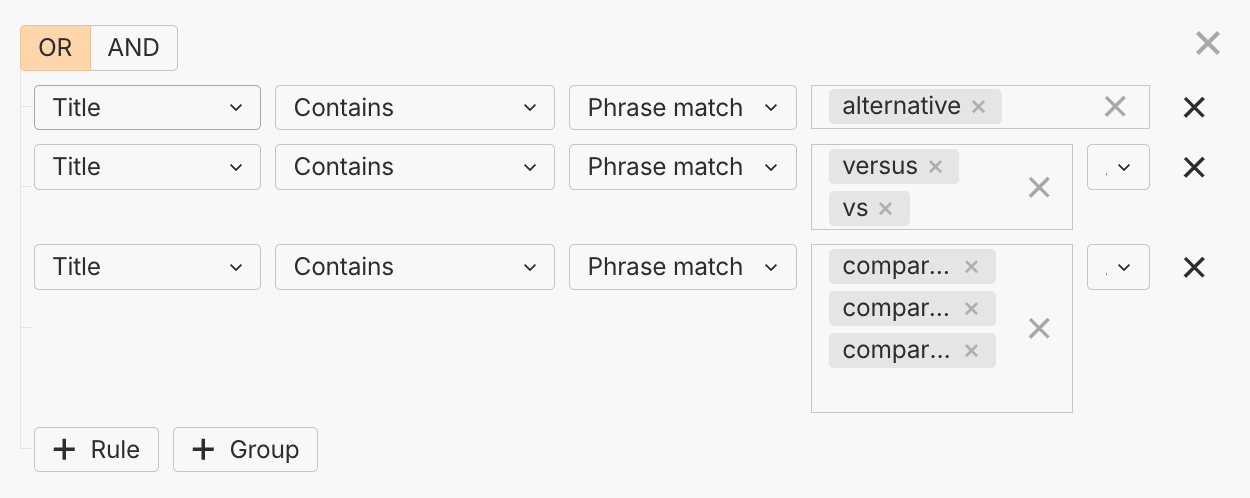
This wasn’t necessary for us, as our most popular mentions tend to come from head-to-head reviews, so they’re pretty easy to find.
Analyze your video mentions in NotebookLM
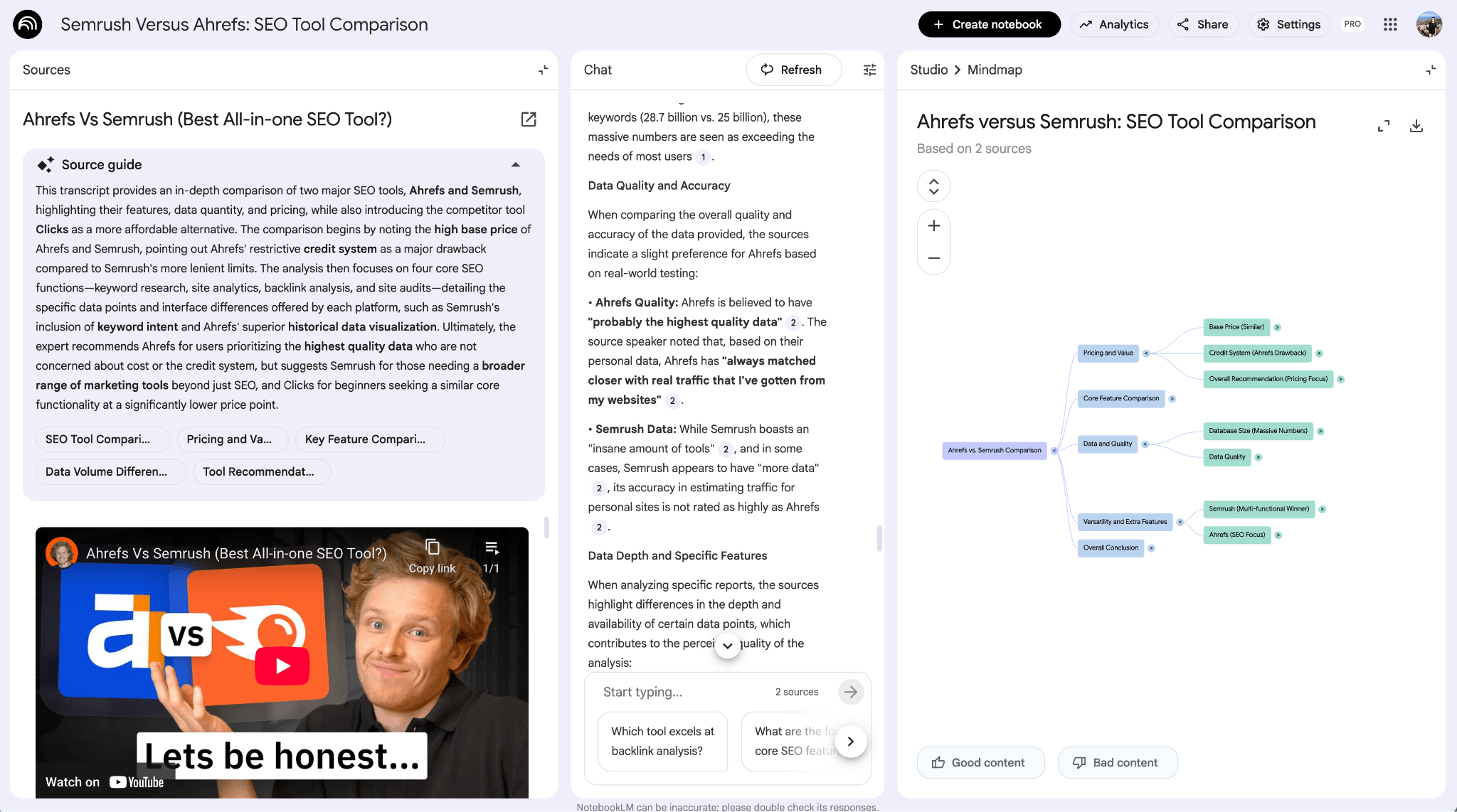
After setting up my filters, I immediately found two reviews pitting Ahrefs against Semrush.
The first came from “Marketing Island”, published back in May 2024. To date, it’s been viewed 10.2K times.

The second was from “Jaume Ros”, published back in August 2024 and viewed 3.4K times.

When you run them through NotebookLM, it becomes clear one recommends Semrush, and the other Ahrefs.

But in both cases, the creators review Ahrefs negatively due to our old “credits” based payment system, and the fact that we lack a broader range of marketing tools.
Our platform and pricing has changed a lot since these videos were created.
We’ve done away with credits, and added much more versatile marketing features like Brand Radar for AI monitoring, Social Media Manager for scheduling social posts, and Web Analytics—our GA4 alternative for analyzing all-site traffic.
One action we might take here is to reach out to these creators, update them on Ahrefs’ product developments, and ask if they’d be interested in filming new reviews.
This way we can improve the accuracy of the information surrounding our brand, and hopefully encourage more conversions.
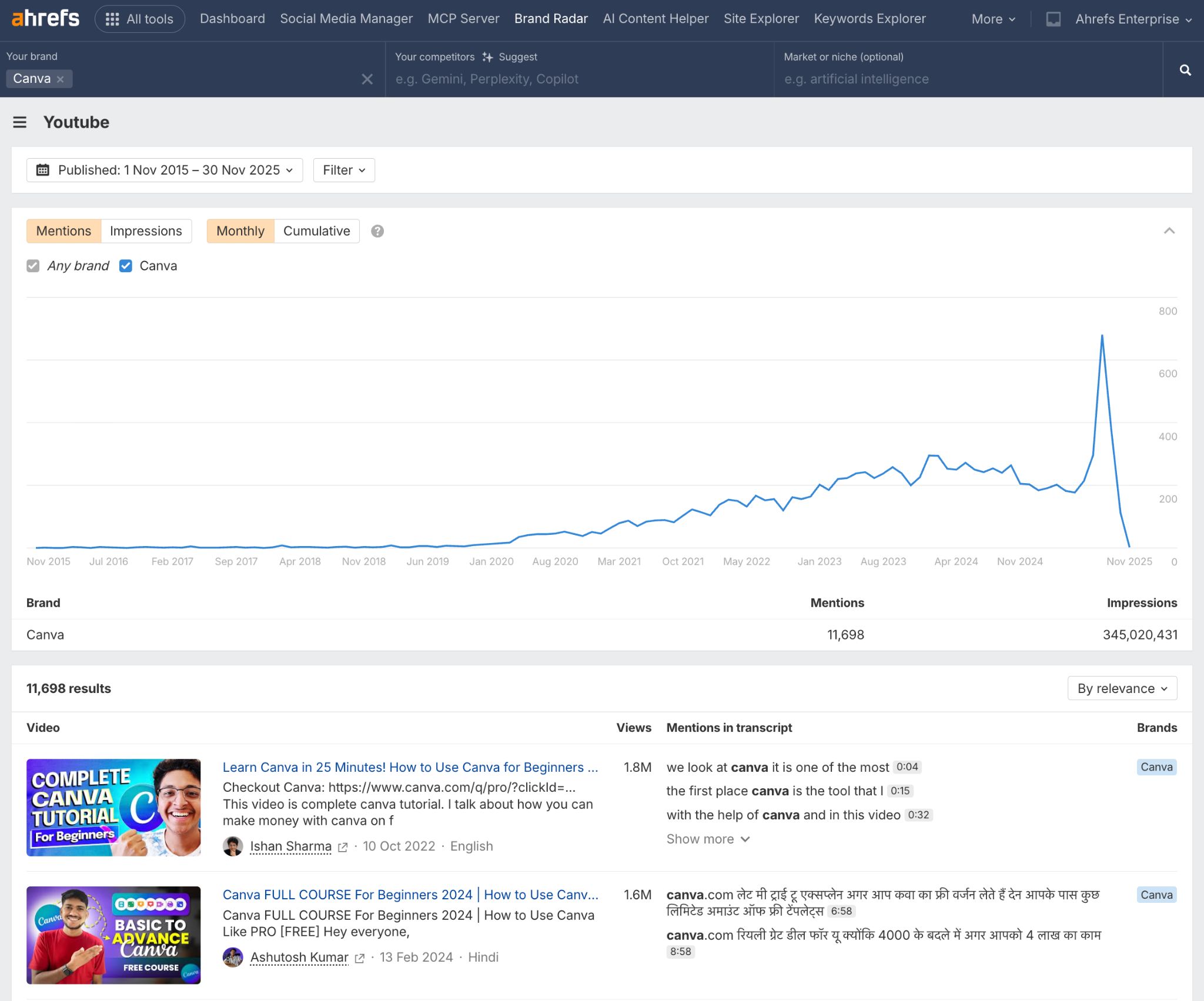
Similar Posts

.org vs .com: What’s the Difference & How to Choose Which Domain Extension Is For You
.com and .org are both well-known examples of domain extensions. But what is .com exactly, and what is .org? And does it matter which one you use? (Spoiler alert: yes.) When you set up a website for a business or a non-profit organisation, you might think the most important part of the address is the…
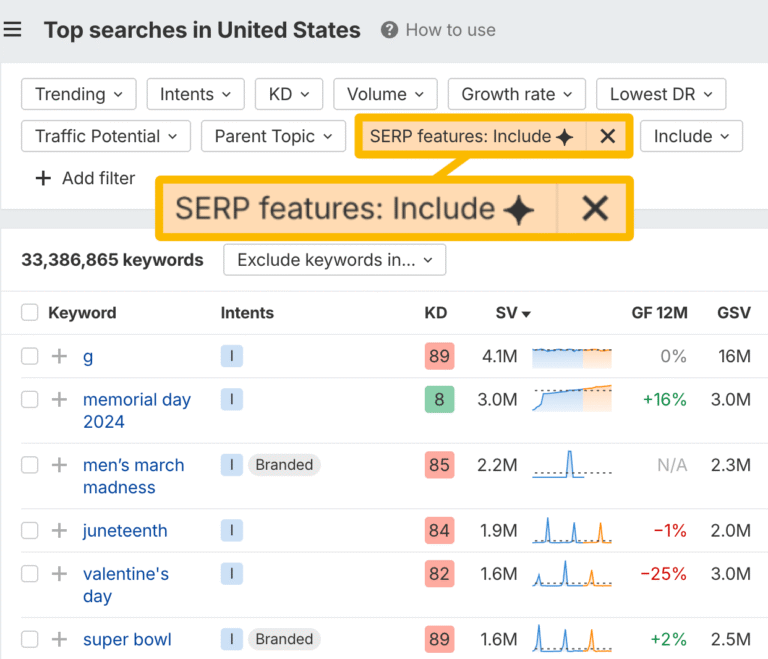
What Triggers AI Overviews? 86 Factors and 146 Million SERPs Analyzed
What triggers an AI Overview? What types of queries are most likely to generate an AIO, and which are relatively safe? Can we predict where AIOs will appear, and even target SERPs without them? To answer these questions, we analyzed our database of 146 million SERPs and explored how often AI Overviews appeared for 86…

How Do AI Content Detectors Work? Answers From a Data Scientist
There are tons of tools promising that they can tell AI content from human content, but until recently, I thought they didn’t work. AI-generated content isn’t as simple to spot as old-fashioned “spun” or plagiarised content. Most AI-generated text could be considered original, in some sense—it isn’t copy-pasted from somewhere else on the internet. But…
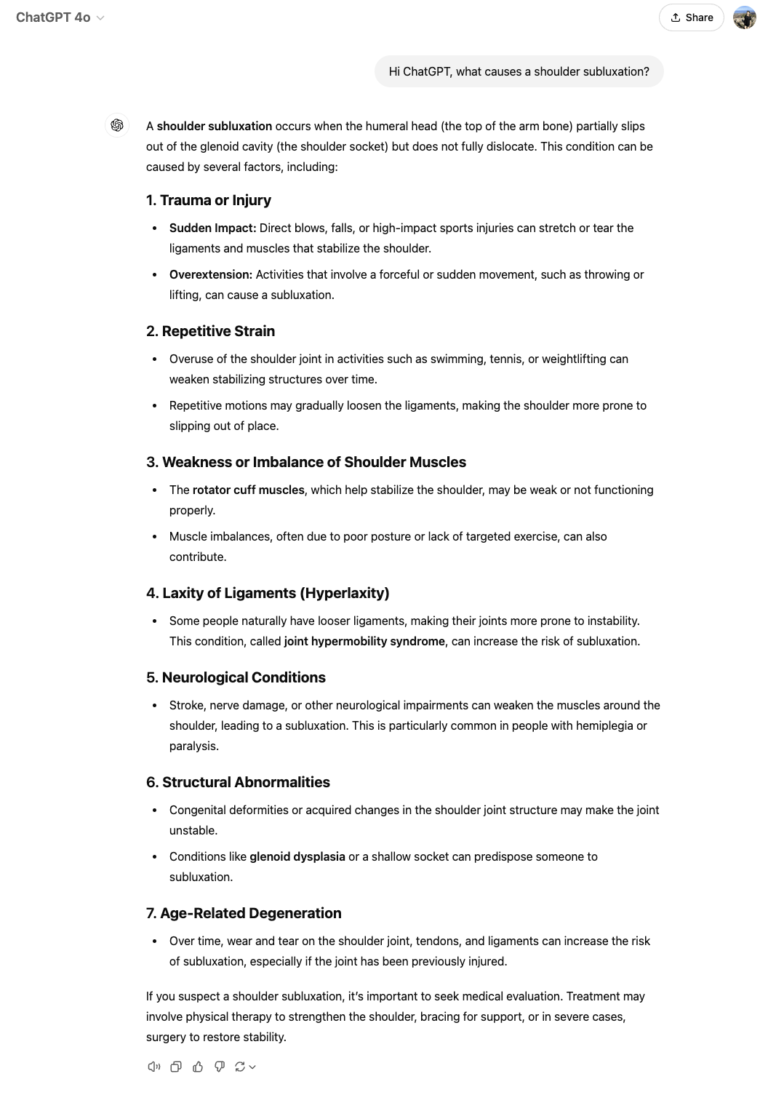
Our 9 Best ChatGPT Alternatives for 2025 (So Far)
During my flat-sharing days, I had a housemate that would follow me room to room, chattering away for hours—even when I hid in the bathroom for some peace, he’d monologue at me through the door. ChatGPT reminds me of him—nice enough, spits out some interesting facts, but boy can that AI go on. And, unfortunately,…
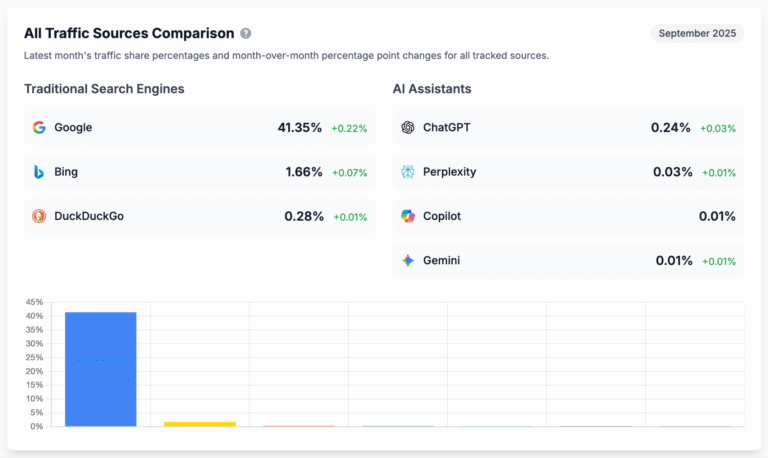
How to Earn LLM Citations to Build Traffic & Authority
Ask ChatGPT, “How much does SEO cost?” and you’ll likely see Ahrefs cited as a source. Ask Claude about email marketing benchmarks, and Mailchimp’s data appears. Search Perplexity for project management tips, and Asana’s guides get referenced. At first glance, it looks like only big brands get cited in AI answers. In the top 10…
2 New Tutorials Added to Single Directory Components Course
As promised, we’ve added 2 new tutorials to our course, Single Directory Components in Drupal: Props and slots are both mechanisms for passing data and content to UI components. In Understanding Props and Slots in Drupal Single Directory Components, you’ll learn the difference between props and slots in Drupal SDCs, and how to choose the…
